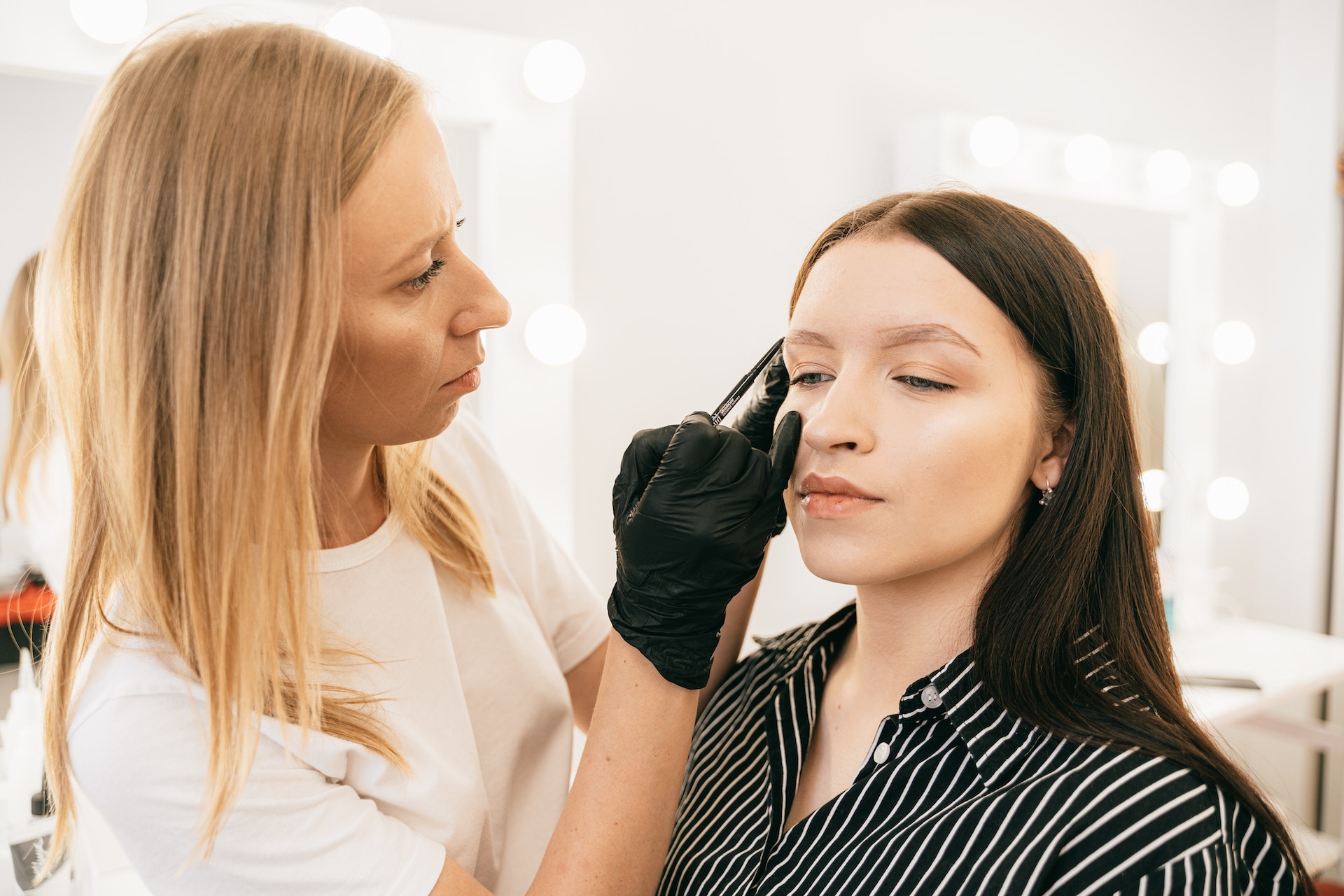Why has threading gained popularity
in the beauty industry?

What is threading called?
Threading is a hair removal technique that originated in South Asia and the Middle East. It is also commonly referred to as "threading" in English. The method involves using a twisted cotton thread to remove hair from the root, creating clean and precise lines.
What are the benefits of threading?
1. Precision:
Threading allows for precise shaping of eyebrows and can be used to target individual hairs.
2. Less Irritation:
Threading is known for causing less skin irritation compared to other hair removal methods like waxing or tweezing.
3. Quick:
The process is generally quick, especially for smaller areas like the eyebrows and upper lip.
4. Suitable for Sensitive Skin:
Threading is often suitable for individuals with sensitive skin as it does not involve the use of chemicals or heat.
5. Fine Hair Removal:
Threading can effectively remove fine facial hair.
4. No Chemicals Involved:
Unlike some hair removal methods, threading does not involve the use of chemicals, reducing the risk of adverse reactions.
Is it good to do threading on the face?
Yes, threading is considered a good and effective method for facial hair removal. It is commonly used for shaping eyebrows, removing unwanted facial hair, and achieving a clean and defined look.
Is threading better than waxing?
The preference between threading and waxing often depends on personal preferences and skin sensitivity. However, some people find threading to be less painful and irritating than waxing, and it is generally considered more suitable for individuals with sensitive skin.
Does threading brighten skin?
While threading itself is not a skin-brightening treatment, the removal of facial hair can contribute to a smoother appearance, potentially giving the skin a brighter look.
What are the disadvantages of threading?
1. Potential Pain:
Threading can be uncomfortable for some individuals, particularly in sensitive areas.
2. Redness:
Temporary redness and minor irritation may occur after threading, but it typically subsides quickly.
3. Risk of Ingrown Hairs:
Like with any hair removal method, there is a risk of developing ingrown hairs.
4. Skill Dependent:
The effectiveness of threading depends on the skill of the practitioner. Inexperienced practitioners may not achieve the desired results.
Is threading good for your hair?
Threading is generally considered safe for the hair as it does not involve the use of harsh chemicals or high temperatures. It removes hair from the root, promoting a smoother regrowth.
What are the 4 main benefits of using threads?
1. Precision:
Threads can be used to create precise and well-defined shapes.
2. Fine Hair Removal:
Threads are effective in removing fine and short hairs.
3. Less Irritation:
Threading is often gentler on the skin, causing less irritation compared to some other methods.
4. Quick:
The threading process is usually quick, making it a convenient option for those with busy schedules.
Does threading help clear skin?
Threading itself is primarily a hair removal method rather than a skincare treatment. However, by removing facial hair, threading can contribute to a smoother skin appearance.
Does hair grow back thicker after threading?
No, threading does not cause hair to grow back thicker. The regrowth after threading is typically finer and softer than before.
Can threading permanently remove hair?
Threading is not considered a permanent hair removal method. It removes hair from the root, but regrowth will occur over time. For more permanent results, methods like laser hair removal or electrolysis may be considered.
Does threading remove all hair?
Threading can remove visible hair during the session, but it may not remove all hair permanently. Some hair may still be in the early growth stage and not visible during the threading process.
Does threading remove facial hair?
Yes, threading is commonly used to remove facial hair, including on the eyebrows, upper lip, chin, and other areas where precise hair removal is desired.
Visit us at:
Pure Wax
8492, Baltimore National Pike,
Suite #105, Ellicott City, MD 21043
Phone : +1 410-465-6700
Website: https://Purewaxmd.com



